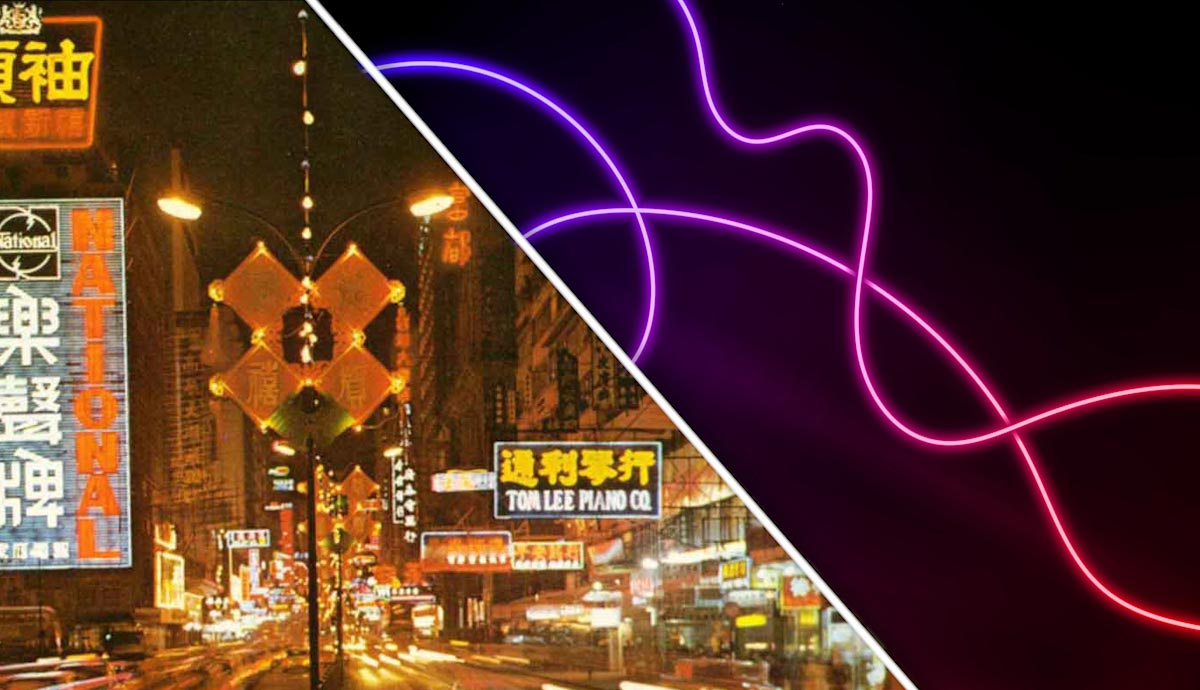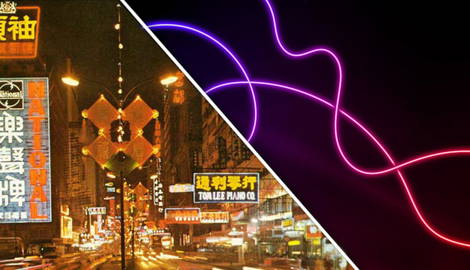
For most of the 20th century, illuminated, larger-than-life neon billboards ignited passions and beckoned purchases, leaving consumers giddy and spellbound. At some point, these signages hinted at unfulfilled desires and were associated with the seedier side of the city such as dingy bars and sex shops. What are some of the reasons behind the allure of neon? What made them such endearing sights that constantly evoke fond memories of bygone eras? This article delves into the fascinating history of neon, shedding light on its profound role in shaping the streetscapes and the history of major cities around the world.
From the Laboratories Came the First Glow of Neon

In the 1890s, the discovery of a scarce gas named neon ignited a fascination with bright glowing lights that would be ablaze for the next century. When British chemist William Ramsay isolated neon in a glass tube and charged it with electricity, he saw—in his own words—the Northern Lights appear before his eyes. Mesmerized by the jaw-dropping sight, Ramsay later described it as “a brilliant flame-colored light, consisting of many red, orange, and yellow lines.” This sentiment was echoed by Morris Travers, with whom Ramsay co-discovered the four noble gases—neon, argon, krypton, and xenon. “The blaze of crimson light from the tube told its own story, and it was a sight to dwell upon and never to forget,” said Travers. “For nothing in the world gave a glow such as we had seen.”
Scientific Breakthrough and Start of Commercial Use

Despite Ramsay and Travers’ spellbinding discovery, the use of neon remained within the confines of laboratories for the next decade. This was to change when French chemist and entrepreneur Georges Claude found a commercial use for neon. He invented the Claude Tube—modified from the older Moore tube—that could create a stable and lasting red light with an efficiency of 15 minutes per watt.
In 1910, the world saw neon for the first time in its full glory when Claude put up two larger-than-life red neon signs at the Paris Motor Show. Claude went on to light up more of the Parisian nightscape with his company Air Liquide. The first commercial neon sign bearing the words PALAIS COIFFEUR was said to have been made for a hairdressing salon in Boulevard Montmartre in Paris.

In the 1920s, neon made its maiden voyage across the Atlantic to the United States. American entrepreneur Earle C. Anthony had commissioned two neon signs with the word Packard, referring to the luxury automobile brand, for his Los Angeles showroom. It was reported that many were so enamored by the electrifying signs the police had to be summoned to manage the human and vehicular traffic. Like their European counterparts, the people of the United States were blown away by the trendy invention, marking the start of neon’s invasion of both the American streetscape and psyche.
The Pre-War Heyday of Neon Signs

In 1924, Claude established a company named Claude Neon Light Inc. in New York, lighting up the night skies of the Big Apple. The success of his neon signs business led to more franchises across the country in Chicago, Los Angeles, San Francisco, and Detroit, and even in cities abroad such as Casablanca and Shanghai. By the mid-1930s, almost every major city in the world had neon signs defining their streetscape as they grew into a popular form of outdoor advertising. Neon signs were an enduring staple, responsible for leading consumers into diners, gas stations, cinemas, and even motels.

As war loomed near in the late 1930s, neon manufacturing factories were closed, as with many other businesses. Lighting restrictions were also imposed in countries such as China, Britain, and Germany. No matter which side of the war you were on, night-time aerial bombardment was a reality—one that worked against the use of neon lighting. Both the Allied and Axis governments mandated that their citizens abide by the blackout rules as the slightest source of light would endanger the country.
Overnight, neon emporiums such as Times Square and Piccadilly Circus fell into sheer darkness. It was in April 1945 after Adolf Hitler’s suicide that Big Ben was lit once again, ending more than five years of blackout regulations. As people celebrated freedom and victory, the reignition of major cities marked a symbolic end to the dark days of the war.
1950s: Hong Kong’s Neon Era Begins

The allure of neon was not just prominent in the Western world. Across the Pacific in Hong Kong, neon signs were the defining symbols of the city. Hong Kong’s neon age had an explosive start in the 1950s and flourished through to the 1980s.

Nathan Road, a bustling shopping district, once housed the larger-than-life signage of National Panasonic (now known as Panasonic) that no Hong Konger could ever forget. It heralded the iconic era of advertisers using gigantic neon signs to build their brands, as the streets of Hong Kong brandished some of the world’s largest neon billboards. The dizzy visuals of a city constantly in flux and saturated in neon have become synonymous with Hong Kong’s image ever since.
Neon is Shining, Shimmering… and Sordid?

A darker side of neon emerged in the 1950s and 1960s as it was increasingly associated with less respectable activities. From Times Square in New York to Soho in London, neon signs marked the entrances to shady clubs, bars, and sex shops that filled the streets. Neon signages in kaleidoscopic colors lit up both back alleys and shop fronts, in a time when sleaze was not shied away from. The most carnal of desires—fulfilled and unfulfilled—was set ablaze in vibrant neon, which became synonymous with the seedy underbelly of city life.
Lights Out: Neon’s Gradual Decline

As neon became a symbol of seediness, it too began to face the imminent threat of becoming obsolete for several reasons. From a cost perspective, business owners were finding it expensive to replace or repair flickering and faulty neon signages. This coincided with the emergence of backlit, fluorescent lightboxes as a more conducive and less costly alternative. At the same time, the novelty and idea that neon represented something futuristic was quickly fading away with the widespread usage of such lighting. To make matters worse, health concerns about the exposure of the skin to the lead content in neon tubes also surfaced during this time.
From the 1990s onwards, the popularisation of LED (light emitting diodes) relegated neon to a relic of a bygone time. LEDs comprised single-point semiconductor light sources and were a cheaper and more sustainable lighting option. LEDs also provided more flexibility in the form they take, as opposed to the rigidity of bent neon tubes. Another reason for neon’s decline was safety. In the mid-2000s, Hong Kong authorities received numerous reports on the falling risk of aged street signages—many being neon-lit—raising an alarming public safety concern. This led to the removal of more than 3,000 unauthorized signboards annually, with more than 5,000 signboards disappearing from the streets in 2009 alone. Four years later, the government enacted the Validation Scheme for Unauthorised Signboards and the disappearance of neon signages from the streets has accelerated ever since.
Neon Never Dies: Glowing Influence on Popular Culture

While neon today is largely used in artistic installations and as indoor decorative lighting, its legacy cannot be dimmed. For many, the enigmatic lighting evokes strong feelings of yearning and nostalgia for a simpler and more vibrant past. Despite its bygone functional use, neon has an inalienable part to play in creating unique and dynamic works in pop culture. For example, modern neon art emerged as a trendy medium in the late 1990s and early 2000s, thanks to prominent artists such as Tracey Emin. The British artist is credited for popularising neon as a form of text art. She worked with neon light manufacturers who created colorful light tubes that closely referenced her handwritten notes. A beautiful combination of the written word and the neon art form, Emin’s works were lauded for her distinctively poetic and personal expressions.

In cinema, titillating neon signs lead viewers into a realm where their desires are safely embraced and not met with judgment. Credited for immortalizing the Hong Kong nightscape is film director Wong Kar Wai, an important person in Asian cinema. Wong’s spellbinding world, heavily saturated with neon lights, showed one of the most iconic and distinctive cinematic styles. Legions of film buffs and cinema enthusiasts connect with his characters who are often navigating loneliness and lovesickness in the neon-soaked city that never sleeps. To this day, Wong’s masterpiece Fallen Angels (1995), which follows the night-time escapades of a hitman, his agent, and a mute delinquent, remains iconic.
At its core, the story of neon is one anchored in swaying human emotions. It is capable of evoking the strongest feelings of desire, temptation, and happiness. With a neon-filled vista in brightly lit streets, one can never go gently into that good night characterized by fun, revelry, and even misbehavior.










